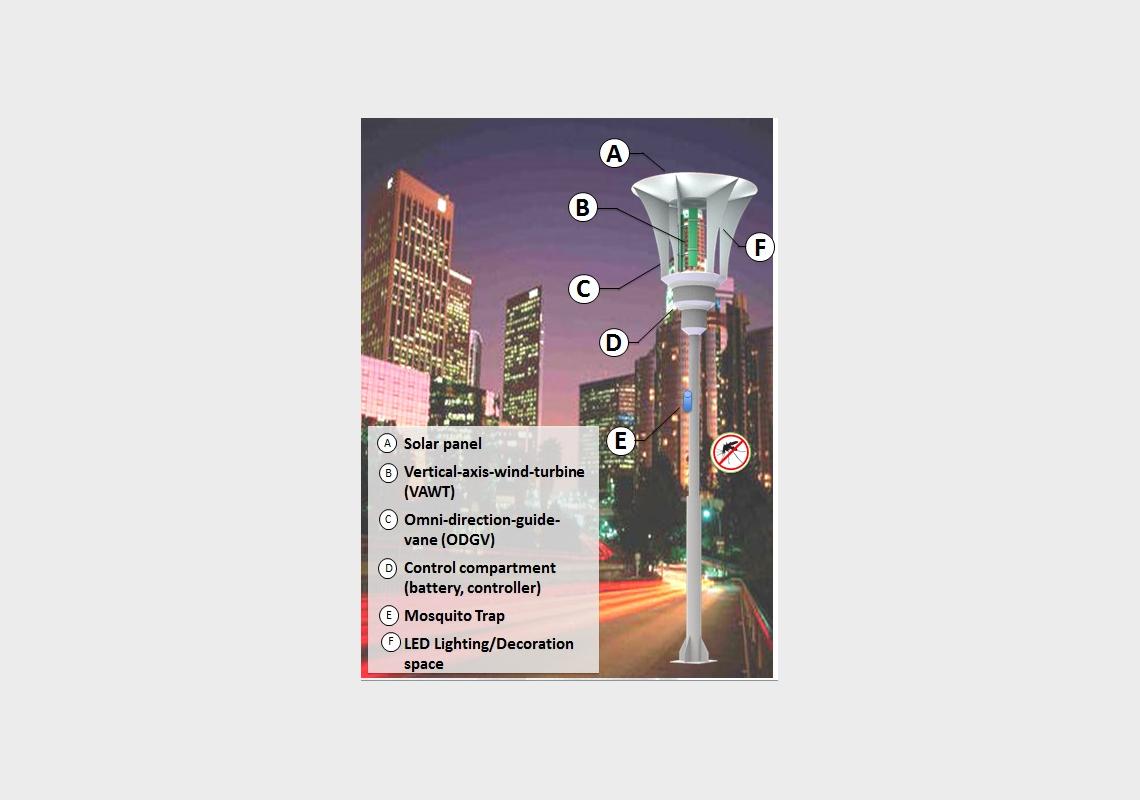Figure: Smart Outdoor Lighting System
The smart outdoor lighting system is an innovative idea of combining hybrid wind-solar energy generation, LED lighting and mosquito trap into one compact design. The off-grid features of the system offers great advantage where it can be placed in anywhere include the remote area or the highly populated urban area.
The hybrid renewable energy sources consist of a solar photovoltaic (PV) panel and a vertical axis wind turbine (VAWT). The PV panel located at the top of the system is to reduce the shadow effects and maximize the energy harness for sun; whereas, the VAWT is shrouded by the omni-direction-guide-vane (ODGV) which is a wind power augmentation system that creating venturi effect to increase the on-coming wind speed.
From the wind tunnel testing, the power output for the ODGV integrated VAWT increased by about 3.48 times compared to the bare VAWT. The rotating parts of the VAWT are enclosed within the ODGV and thus it is safer for the public. These two renewable energy sources are useful to cover the load demand under varying weathers, hence improving the system’s reliability. The power generated by the green energy is used to power the lighting and the mosquito trap. The long life span LED lights that integrated with the guide vanes not only provide brightness during night, but also serve as decorative purpose.
With the increasing dengue outbreak cases across Malaysia, there’s an urge to seek a solution to control the mosquito’s population. Mosquitoes react sensitively to certain wavelength of ultraviolet (UV) lights. The mosquito trap consists of an integrated weak UV (ultraviolet) light and a suction fan. Certain parts within the trap are coated with titanium dioxide (TiO2). When the UV wavelength comes in contact with the TiO2, a photocatalytic reaction takes place that produces CO2. This is the same CO2 that humans exhale and is irresistible to mosquitoes. Once the mosquitoes have been attracted to the trap by the UV light and CO2, the fan draws the mosquitoes at the bottom and keeps them from escaping based on the vacuum action created by the continuous cycle of the fan. With these benefits, the innovation can be a cost-effective mosquito trap that forms part of tomorrow’s urban landscape.
For further information, contact:
Dr. Chong Wen Tong
Associate Professor; Programme Coordinator
Department of Mechanical Engineering, Faculty of Engineering, University of Malaya,
50603 Kuala Lumpur, Malaysia.
Email: [email protected]



